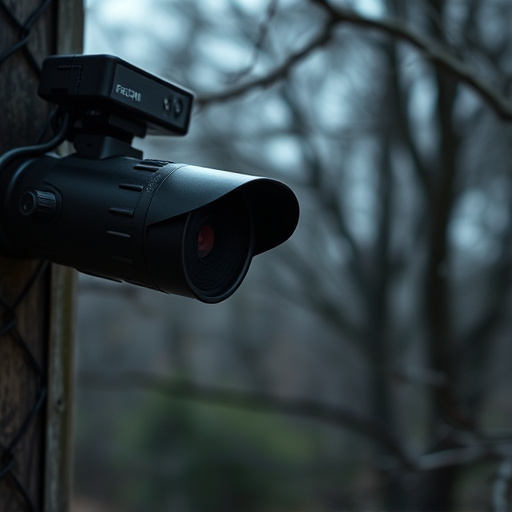The Spy Camera Childcare Safety Guide explores the diverse world of hidden monitoring devices, advising parents and caretakers on understanding camera types and common placement strategies in childcare settings. It emphasizes regular equipment checks and maintenance to ensure optimal surveillance, advocating a multi-layered approach including staff training, signal detection techniques, and legal compliance with explicit parental consent. Installations should be limited to crucial areas while maintaining transparency, reflecting a commitment to both safety enhancement and privacy respect.
In today’s digital era, ensuring childcare safety has become paramount. This comprehensive guide delves into the world of spy cameras, exploring their types and common placement in childcare settings. We emphasize the crucial role of regular equipment checks and maintenance for effective monitoring. Additionally, we present advanced signal detection techniques to uncover hidden devices. Lastly, we discuss legal considerations and ethical guidelines for installing spy cameras in childcare facilities, offering a complete Spy Camera Childcare Safety Guide.
- Understanding Spy Cameras: Types and Common Placement in Childcare Settings
- The Importance of Regular Equipment Checks and Maintenance for Effective Monitoring
- Advanced Signal Detection Techniques to Uncover Hidden Devices
- Legal Considerations and Ethical Use Guidelines for Spy Camera Installation in Childcare Facilities
Understanding Spy Cameras: Types and Common Placement in Childcare Settings
Spy cameras, also known as hidden monitoring devices, come in various types designed for covert surveillance. In childcare settings, these can range from small, miniature cameras disguised as everyday objects like toys or books to more advanced models embedded in light fixtures or vents. Understanding these devices and their common placement is crucial for any Spy Camera Childcare Safety Guide.
Placement often mirrors areas where caregivers have less direct supervision and children might engage in activities that require closer monitoring. This includes play areas, nap rooms, and kitchens. Knowing the types of spy cameras and their potential hiding spots enables parents and caretakers to conduct thorough checks and enhance overall childcare safety.
The Importance of Regular Equipment Checks and Maintenance for Effective Monitoring
Regular equipment checks and maintenance are paramount for effective monitoring, especially when employing a spy camera childcare safety guide. Technology, despite its reliability, is not infallible. Regular inspections ensure that devices like hidden cameras function optimally, providing clear and consistent surveillance footage. This is crucial in scenarios where the well-being of children depends on meticulous observation, such as in daycare centers or nursery schools.
By conducting routine maintenance, you can identify potential issues early on, whether it’s a faulty lens, power supply problems, or software glitches that might compromise the quality and integrity of the surveillance data. Preventative measures through regular checks are far more efficient than attempting to rectify problems after they’ve arisen, ensuring a continuous and reliable monitoring system for the safety and security of children in your care.
Advanced Signal Detection Techniques to Uncover Hidden Devices
In the realm of childcare safety, staying vigilant against hidden monitoring devices is paramount. To counter sophisticated technology employed by covert spies, a nuanced approach to signal detection is required. Utilizing advanced techniques such as frequency analysis and signal interference can help uncover these hidden threats. By scanning for unusual radio frequencies or sudden disruptions in wireless networks, professionals can identify potential spy cameras disguised as everyday items.
The Spy Camera Childcare Safety Guide emphasizes the importance of regular equipment audits and staff training to recognize suspicious devices. Combining technical expertise with keen observation allows caregivers to become adept at detecting hidden monitoring devices, ensuring a secure environment for children under their watchful eyes.
Legal Considerations and Ethical Use Guidelines for Spy Camera Installation in Childcare Facilities
When installing spy cameras in childcare facilities, it’s imperative to navigate a delicate balance between enhancing safety and respecting privacy. Legal considerations vary by region, but generally, there are strict guidelines for surveillance technology deployment, especially in sensitive environments like schools and daycares. In many jurisdictions, hidden cameras are only permissible with explicit consent from parents or guardians, and their use must adhere to specific ethical frameworks.
These guidelines often emphasize transparency, ensuring that all parties know of the camera’s presence. Installations should be limited to areas where supervision is necessary for child safety, such as playrooms, dining halls, and outdoor spaces. Additionally, regular reviews and updates to the Spy Camera Childcare Safety Guide are crucial to stay informed about evolving legal and ethical standards, promoting responsible surveillance practices in childcare settings.
In conclusion, ensuring childcare safety through hidden monitoring device signal detection is a multifaceted approach. Understanding various spy camera types and their common placement, coupled with regular equipment checks and advanced signal detection techniques, can significantly enhance security. However, it’s paramount to navigate legal considerations and adhere to ethical guidelines for spy camera installation in childcare facilities, striking a balance between safety and privacy. This Spy Camera Childcare Safety Guide equips parents and caregivers with the knowledge needed to protect children effectively while upholding moral standards.
